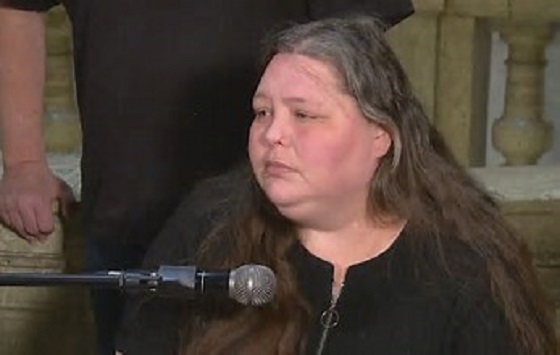National
Paul Wells on PM Trudeau’s cabinet shake up
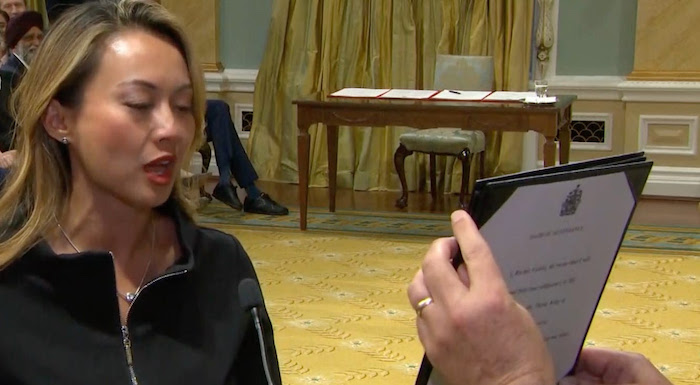
Rechie Valdez teared up a bit taking her oath. It was nice.
Posted with permission from Substack author Paul Wells
The army you have
Exciting new combinations of Liberals and syllables
I skipped almost the entire cabinet-shuffle business on Wednesday. I think I’ve mostly managed to avoid getting jaded in this job, but there are days, boy howdy. Welcome, Minister Blah Blah Blah to the crucial office of Provision, Preparedness, Children and Popular Song. Congratulations, hug your kids. Next.
Then here was Rechie Valdez’s voice catching as she took the oaths (one for entry into the Council of the Elders and the other to join the Resonant Circle of the One, or whatever) and for just a minute, boredom took a holiday. The people who do these jobs should be emotional about them. Optimism is a good thing. Small businesses are definitely on the list of things worth caring about. Go get ’em, minister.
Paul Wells is a reader-supported publication. To receive new posts and support my work, consider becoming a free or paid subscriber.
A foolish consistency is the hobgoblin of days like this. During the 2021 campaign, when things were going badly, the official line out of the Trudeau brain trust was that the prime minister “doesn’t do shakeups.” And yet here’s one now. What’s changed?
There are always two ready answers to such a question. For one, the world has changed, as it always does. Previous shuffles addressed the astonishing 2016 votes for Brexit and Trump, and the less epochal but still significant election of Doug Ford as Ontario premier in 2018. In late 2021, when Trudeau was randomly firing one of the most experienced ministers in his cabinet, it might still have been possible to believe the PM’s third term in office wouldn’t be dominated by Russia, China, and the knock-on effects from a sharp increase in immigration. The misplaced optimism of that bygone era 20 months ago can no longer be maintained.
Second, the electoral context has changed. “We have all the time in the world before the next election” has become “We sure don’t,” and the readers who get cross when I link to horse-race polls are going to hate clicking on this.
I guess this shuffle is designed to address the Poilievre threat? Kind of? Listlessly? A year ago Trudeau was already getting advice to make sharp, noticeable changes in his team, message and style. (Yes, I just linked to myself.) Today he put Sean Fraser in charge of Housing and Marc Miller in charge of Immigration. Those might be the two most encouraging moves among dozens, both for Liberals who hope “good communicators” won’t turn out to be a sad joke, and for citizens who hope strong administrators might, even if only occasionally, be put in charge of challenging files.
The rest of the day’s news is puzzling. Seamus O’Regan to Labour? I thought the boss liked him. Pablo Rodriguez to Transport would seem to be yet another case of ministerial burnout on all those Web Giant-Killer bills that have become the torment of a succession of Heritage ministers. Pascale St.-Onge replaces him on the censorship ‘n’ subsidies beat, ringing a new variation on the eternal question: Why do they call it Canadian Heritage if only ministers from Quebec are allowed to do the job?
Gary Anandasangaree at Crown-Indigenous Relations and Arif Virani as Minister of Justice and Attorney-General are two cases of rookie ministers promoted to tough jobs. I’ve heard good things about both of them. Both have relevant committee and parliamentary-secretary experience. Virani was Jody Wilson-Raybould’s parliamentary secretary; she seems not to have kept many fond memories. (In her memoir she calls him one of the “talking heads” who were sent out “to make comments that evidence has now shown were not accurate or right.” In general, Trudeau, a non-lawyer mostly counselled by non-lawyers, seems to be chronically unsure why he should have a justice minister or what they are good for.)
Freeland, Guilbeault, Champagne and Joly remain in their previous jobs, evidence of their clout. On the other hand, I maintain that Rodriguez’s being shuffled was evidence of his clout. By now it’s clear that Freeland writes her own rules: she does the work she wants to do, to varying degrees of success, and nobody in this government can make her do anything else. Her fate is bound up with the prime minister’s. Probably neither of them expected it, but the stability of the tandem is now part of Trudeauworld’s game physics.
Cabinet shuffles defy confident prediction, or should. Will Jean-Yves Duclos make a difference as Public Services and Procurement Minister? He should. He’s a detail man in a detail job. But ministers are rarely better than they are permitted to be by circumstances and by the circle around the PM. Duclos will shine if this government wants to buy stuff, and not if it doesn’t.
That 2021 bit of campaign spin wasn’t entirely false. In some ways this prime minister really doesn’t do shakeups. He keeps his chief of staff, his indispensable deputy, his own way of thinking and talking about his government. Everything else swirls around. He came to office promising real change. Increasingly what’s real is what doesn’t change.
Paul Wells is a reader-supported publication. To receive new posts and support my work, consider becoming a free or paid subscriber.
Invite your friends and earn rewards
Media
Reporters determined to drive their industry and its reputation into the abyss one Tweet at a time

Last week, my column for The Hub was about why journalists, for the sake of journalism, should avoid posting on Twitter/X.
It took mere hours for my advice to be wrapped up in a ball and shoved right back at me when Robert Fife, a reporter of many years experience (he’s even older than I am) and the Globe and Mail’s Ottawa bureau chief, posted in response to the House of Commons’ vote on a Conservative motion to approve pipelines that:
“Conservatives persist with cute legislative tricks, while the government tries to run a country.”
The Rewrite is a reader-supported publication.
To receive new posts and support my work, consider becoming a free or paid subscriber.
While he’s free to do so and obviously views things differently, it is quite beyond me why the bureau chief of a distinguished journalism organization would expose himself so casually to accusations of bearing a bias – particularly given public concern about government funding of media – and so I responded by sharing Fife’s post with the comment:
“I’m old-fashioned enough to think reporters shouldn’t be blatantly stating biases. Not a great way to retain public trust.”
Now, I was aware that Fife was sharing a headlined opinion column by a colleague, Robyn Urback. But Urback is perfectly capable of promoting her own work and if Fife’s sole motivation was to neutrally share her column, it would’ve been fine if he had posted something like: “Here’s one perspective on yesterday’s House of Commons vote.”
Some people suggested the post was OK because it was only sharing someone else’s viewpoint and a headline. But Fife’s appearance on CBCNN’s Power and Politics – in which he enthusiastically described the Opposition as “childish” and criticized it for criticizing the government – made it appear the Tweet was otherwise motivated. Not everyone in today’s newsrooms shares my view that reporters should do everything in their power to be viewed as objective. Fair enough. While the aspiration remains popular with the public, it is no longer favoured by many, maybe even most, modern journalists.
Fife’s been a good reporter for decades going back to long before Twitter. He’s been announced as the 2026 recipient of the Public Policy Forum’s Hy Solomon award for excellence in public policy journalism. There are also some exceptionally good reporters at the Globe and Mail such as Grant Robertson, who has won nine National Newspaper Awards – more than anyone, ever, and eight more than me. There is no evidence I can find that Robertson, like a lot of other very good journalists, even has an account on X/Twitter. I have absolutely no idea or suspicions concerning what he thinks about anything going on in the world and I think that is how journalists should aspire to be perceived. But when social media posts by other reporters bring into question journalists’ reputations as fair brokers of the events of the day, his prudent behaviour isn’t enough to keep the entire craft from suffering reputational damage. As the old saying goes, newspapers don’t report when airplanes land safely – a phrase that applies equally to reporters, of which, according to the latest Global Media and Internet Concentration Project report, there were 1,600 fewer in Canada last year.
All that said, I don’t think anyone cares enough to do anything about it. Despite considerable evidence detailing journalism’s decline as a trusted institution, the overwhelming majority of its practitioners appear to me to have no intention whatsoever of altering course.
It looks like time has passed me by. As Leonard Cohen sang, “I’m old and the mirrors don’t lie.” So I will just continue to tilt at windmills for a little longer and then decide if there aren’t more rewarding things to do.
So Tweet away, journos, Tweet away. Tweet all the way into the abyss.
The colloquial nature of many newsrooms continues to fascinate, the latest example being treatment of Bill C-9, which expands the powers of Canada’s hate criminal speech legislation. Already problematic from a free speech perspective, the deal Justice Minister Sean Fraser struck with the Bloc Quebecois to ensure its passage has alarmed both the Canadian Conference of Catholic Bishops and the National Council of Canadian Muslims.
That’s because in exchange for the Bloc’s support, Fraser will amend C-9 so that it removes the exemption given to statements made based on sincerely held religious beliefs. The exemption states: “if, in good faith, the person expressed or attempted to establish by an argument an opinion on a religious subject or an opinion based on a belief in a religious text.”
But, just as our media refuse to acknowledge developments beyond our borders on trans issues and health care models, they remain rube-ishly reluctant to look at what happens when quoting from the Bible becomes a police matter. I wrote about it elsewhere and, given that I am planning a Christmas break, will re-post that piece next week. In the meantime it will be interesting to see if any Canadian media or commentators pick up on the case of Päivi Räsänen, a medical doctor and Member of the Finnish Parliament. She and Bishop Juhana Pohjola of the Evangelical Lutheran Mission Diocese of Finland, twice acquitted, are awaiting the outcome of their third trial on allegations of criminal hate for quoting passages of the Bible regarding a church Pride event. If found guilty, they will face up to two years in prison, the same as in Canada.
The bad news for journalists working within traditional media structures continues.
The Nieman Lab predictions for 2026 forecast that Artificial Intelligence will continue to grow as a source of information for the public.
The good news?
“Tech companies will face pressure in the year ahead to bolster the information ecosystem.”
The bad news?
“Tech companies will realize they don’t need journalism to give people the answers they need.”
The conclusion?
“The threats we (journalists) face are existential, but we can reframe them as opportunities.”
Postmedia columnist Brian Lilley is definitely playing journalism with his elbows up these days.
Last week, he challenged his colleagues in the industry to question the activist group Coastal First Nations on its funding by US interests.
“Here’s an open challenge to the Parliamentary Press Gallery who will be covering the CEO of Coastal First Nations appearing in Ottawa,” he posted on Twitter. “Ask them what rights and title they hold to any of the land in question.
“Ask them about American funding.”
Near as I could tell, he didn’t get any takers and the industry will continue to present the anti-pipeline group as organic. But, just in case, I checked and Lilley’s response was “Hahahahahahhaha!”
Earlier, he firmly put CBCNN Power and Politics host David Cochrane in his place with a Facebook post stating “I’ve never seen an anchor in any country, on any network, push left-wing Liberal talking points as hard as Cochrane.”
Whew! Brian won’t be popular at parties.
Finally, a bouquet to Peter Mazereeuw of The Hill Times for the literary flourish with which he described the anonymous sources so routinely used by press gallery journalists who pretend they aren’t authorized to speak.
Justice Minister Sean “Fraser is currently in a bit of hot water with the PMO, which sent forth some of its anonymous flying monkeys yesterday to tell the CBC that he had not gotten its approval for his deal with the Bloc Québécois ….”
Remember that term.
Happy Hannukah. May your candles burn bright.
Readers will notice a new DONATE button has been added. Please consider making use of it and help us save journalism from bad journalism.
(Peter Menzies is a commentator and consultant on media, Macdonald-Laurier Institute Senior Fellow, a past publisher of the Calgary Herald, a former vice chair of the CRTC and a National Newspaper Award winner.)
The Rewrite is a reader-supported publication.
To receive new posts and support my work, consider becoming a free or paid subscriber.
Business
Storm clouds of uncertainty as BC courts deal another blow to industry and investment
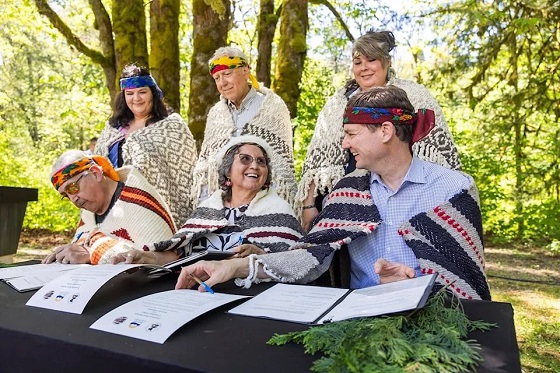
From the Fraser Institute
By Tegan Hill and Jason Clemens
Recent court decision adds to growing uncertainty in B.C.
A recent decision by the B.C. Court of Appeal further clouds private property rights and undermines investment in the province. Specifically, the court determined British Columbia’s mineral claims system did not follow the province’s Declaration on the Rights of Indigenous Peoples Act (DRIPA), which incorporated the United Nations Declaration on the Rights of Indigenous Peoples (UNDRIP) into law.
DRIPA (2019) requires the B.C. provincial government to “take all measures necessary to ensure the laws of British Columbia are consistent with the Declaration,” meaning that all legislation in B.C. must conform to the principles outlined in the UNDRIP, which states that “Indigenous peoples have the right to the lands, territories and resources which they have traditionally owned, occupied or otherwise used or acquired.” The court’s ruling that the provincial government is not abiding by its own legislation (DRIPA) is the latest hit for the province in terms of ongoing uncertainty regarding property rights across the province, which will impose massive economic costs on all British Columbians until it’s resolved.
Consider the Cowichan First Nations legal case. The B.C. Supreme Court recently granted Aboriginal title to over 800 acres of land in Richmond valued at $2.5 billion, and where such aboriginal title is determined to exist, the court ruled that it is “prior and senior right” to other property interests. Put simply, the case puts private property at risk in BC.
The Eby government is appealing the case, yet it’s simultaneously negotiating bilateral agreements that similarly give First Nations priority rights over land swaths in B.C.
Consider Haida Gwaii, an archipelago on Canada’s west coast where around 5,000 people live—half of which are non-Haida. In April 2024, the Eby government granted Haida Aboriginal title over the land as part of a bilateral agreement. And while the agreement says private property must be honoured, private property rights are incompatible with communal Aboriginal title and it’s unclear how this conflict will be resolved.
Moreover, the Eby government attempted to pass legislation that effectively gives First Nations veto power over public land use in B.C. in 2024. While the legislation was rescinded after significant public backlash, the Eby’s government’s continued bilateral negotiations and proposed changes to other laws indicate it’s supportive of the general move towards Aboriginal title over significant parts of the province.
UNDRIP was adopted by the United Nations in 2007 and the B.C. Legislature adopted DRIPA in 2019. DRIPA requires that the government must secure “free, prior and informed consent” before approving projects on claimed land. Premier Eby is directly tied to DRIPA since he was the attorney general and actually drafted the interpretation memo.
The recent case centres around mineral exploration. Two First Nations groups—the Gitxaala Nation and the Ehattesaht First Nation—claimed the duty to consult was not adequately met and that granting mineral claims in their land “harms their cultural, spiritual, economic, and governance rights over their traditional territories,” which is inconsistent with DRIPA.
According to a 2024 survey of mining executives, more uncertainty is the last thing B.C. needs. Indeed, 76 per cent of respondents for B.C. said uncertainty around protected land and disputed land claims deters investment compared to only 29 per cent and 44 per cent (respectively) for Saskatchewan.
This series of developments have and will continue to fuel uncertainty in B.C. Who would move to or invest in B.C. when their private property, business, and investment is potentially at risk?
It’s no wonder British Columbians are leaving the province in droves. According to the B.C. Business Council, nearly 70,000 residents left B.C. for other parts of Canada last year. Similarly, business investment (inflation-adjusted) fell by nearly 5 per cent last year, exports and housing starts were down, and living standards in the province (as measured by per-person GDP) contracted in both 2023 and 2024.
B.C.’s recent developments will only worsen uncertainty in the province, deterring investment and leading to stagnant or even declining living standards for British Columbians. The Eby government should do its part to reaffirm private property rights, rather than continue fuelling uncertainty.
-
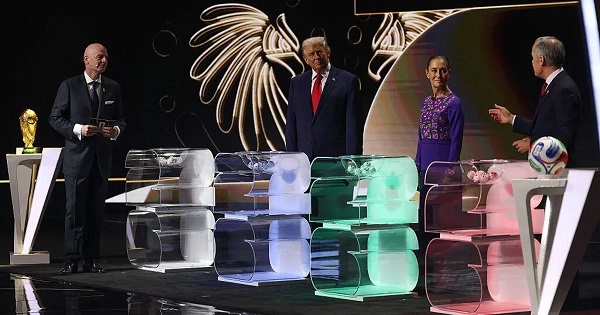
 Bruce Dowbiggin2 days ago
Bruce Dowbiggin2 days agoWayne Gretzky’s Terrible, Awful Week.. And Soccer/ Football.
-

 espionage1 day ago
espionage1 day agoWestern Campuses Help Build China’s Digital Dragnet With U.S. Tax Funds, Study Warns
-

 Focal Points24 hours ago
Focal Points24 hours agoCommon Vaccines Linked to 38-50% Increased Risk of Dementia and Alzheimer’s
-

 Opinion2 days ago
Opinion2 days agoThe day the ‘King of rock ‘n’ roll saved the Arizona memorial
-
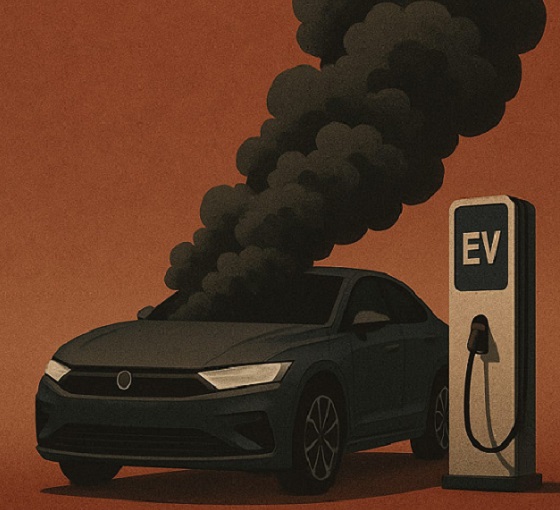
 Automotive14 hours ago
Automotive14 hours agoThe $50 Billion Question: EVs Never Delivered What Ottawa Promised
-

 Agriculture2 days ago
Agriculture2 days agoCanada’s air quality among the best in the world
-

 Business1 day ago
Business1 day agoCanada invests $34 million in Chinese drones now considered to be ‘high security risks’
-

 Health22 hours ago
Health22 hours agoThe Data That Doesn’t Exist






